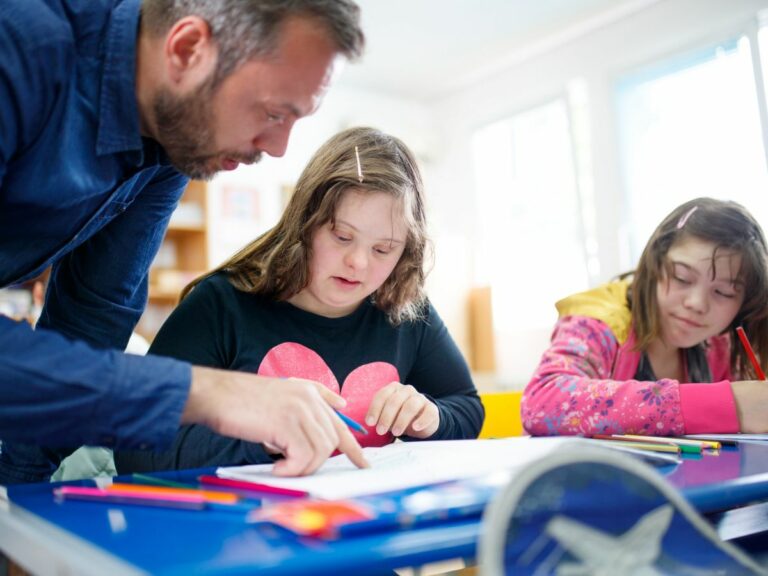Disclosure: This page may contain affiliate links. The Tutor Resource is a participant in the Amazon Services LLC Associates Program as well as other affiliate programs. These are designed to provide a means for us to earn fees by linking to Amazon and affiliated sites at no extra cost to you. Please see our full disclosure for more details.
🔥 10 Emoji Activity Ideas Every Teacher MUST Try! 🌟
Looking for emoji activity ideas to supercharge your lesson plans? You’re in the right place!
In today’s digital age, educators are constantly seeking innovative ways to engage students and make learning more enjoyable. One trend that has gained significant traction is the use of emojis in educational settings.
These small, expressive icons have become an integral part of our daily communication, and savvy teachers are now harnessing their power to create more dynamic and interactive learning experiences.
We’ve even used them in our own teaching, with our online ESL learners! This article will explore various emoji activity ideas for teachers, demonstrating how these colorful symbols can transform traditional lessons into engaging and memorable educational adventures.
Why Use Emojis in the Classroom?
The incorporation of emojis into teaching materials offers a multitude of benefits for both educators and students.
By using these familiar visual cues, teachers can enhance communication, express emotions more effectively, and inject an element of fun into their lessons.
Emojis bridge the gap between digital natives and traditional learning methods, making educational content more relatable and accessible to students of all ages.
Moreover, the use of emojis can help break down language barriers, making them particularly useful in diverse classrooms or when teaching English as a second language.

1. Emoji-Based Icebreakers: Building Rapport Through Icons
One of the most effective ways to utilize emojis in the classroom is through icebreaker activities. These exercises help build rapport among students and create a more comfortable learning environment.
For instance, teachers can initiate a “Guess the Emoji” game where students take turns describing an emoji without naming it, while their classmates attempt to identify it.
This activity not only fosters communication skills but also encourages students to think creatively about visual representation.
Another engaging icebreaker is the “Emoji Self-Introduction,” where students select a series of emojis that best represent their personality, hobbies, or aspirations.
This activity allows students to express themselves in a fun, non-threatening way while getting to know their peers.
2. Emojis for Vocabulary Building: Visual Learning at Its Best
Emojis can also be powerful tools for vocabulary building. Teachers can create word-emoji associations to help students remember new terms or concepts.
For example, when teaching weather-related vocabulary, educators can pair words with corresponding weather emojis to reinforce visual connections.
Context-based exercises using emojis can also be developed, such as having students match emojis to sentences or paragraphs to demonstrate their understanding of new vocabulary in context.
This approach not only makes learning more engaging but also caters to visual learners who benefit from pictorial representations.

3. Emoji Storytelling: Crafting Narratives with Icons
Storytelling is another area where emojis can shine in the classroom. Encouraging students to create narratives using emojis can develop their creativity, language skills, and visual literacy.
Teachers can provide a series of emojis and challenge students to craft a coherent story around them, or ask students to retell a familiar tale using only emojis.
This exercise not only enhances students’ ability to convey complex ideas through simple visuals but also promotes critical thinking as they consider how to represent various plot elements and emotions using limited symbols.
4. Emoji Math Challenges: Making Numbers Fun
For math teachers, emojis offer a unique opportunity to make problem-solving more engaging and visually appealing. Designing math challenges with emojis as visual cues can help students better understand abstract concepts and make calculations more fun.
For instance, teachers could create equations where different emojis represent unknown values, encouraging students to use logic and deduction to solve the problems.
These emoji math challenges foster critical thinking and problem-solving skills while adding an element of playfulness to traditionally dry subject matter.

5. Emoji Art and Expression: Exploring Visual Communication
Art and expression through emojis present another exciting avenue for classroom activities.
Teachers can introduce students to the concept of emoji art, showcasing how these simple icons can be combined to create complex visual messages or even replicate famous artworks.
Encouraging students to create their own emoji art can spark creativity and help them think about communication in new ways.
This activity also provides an opportunity to discuss cultural variations in emoji interpretation, promoting cultural awareness and fostering discussions about how symbols can carry different meanings across diverse communities.
6. Emoji Etiquette
In our increasingly digital world, teaching students about appropriate emoji usage is crucial. Lessons in emoji etiquette helps prepare students for future professional and personal digital interactions.
Teachers can create scenarios where students must decide when it’s appropriate to use emojis and when a more formal tone is necessary.
For example, students could be tasked with drafting emails or messages for various contexts—from texting friends to writing to a potential employer—and discuss which situations call for emojis and which don’t.
Educators can also explore the nuances of emoji interpretation, teaching students how the same emoji might be perceived differently depending on the recipient or context.
This exercise not only enhances students’ digital literacy but also sharpens their social awareness and communication skills.

7. Emoji-Based Assessments: Gauging Understanding with Icons
Emojis can also be effectively utilized for assessment purposes. Teachers can design formative assessments or quizzes using emojis to gauge student understanding and gather feedback.
For example, a quick comprehension check at the end of a lesson could involve students selecting an emoji that best represents their level of understanding.
This method provides a non-threatening way for students to express their comfort with the material and allows teachers to quickly identify areas that may need further explanation.
Multilingual Emoji Activity Ideas for Teachers
Here are more activities that teachers can use to explore how emojis transcend language barriers and encourage students to express themselves.
8. Guess the Emoji Expressions:
Send a text message to your students with two easy-to-understand emojis like a smiling face 😊 and a sad face 😢. Ask them to listen to the screen reader’s description of each emoji and then demonstrate those facial expressions.
Then, depending on their English language skill level, you could even encourage a discussion on scenarios where they would naturally use those specific expressions.
9. Emojis Vocabulary Matching
To enhance vocabulary learning, create engaging flashcards featuring various emojis paired with their corresponding words. For example, match 😊 with “happy” and 🍕 with “pizza.”
Organize students into pairs or small groups for an interactive activity. Encourage discussion and collaboration among students as they work together to match the emoji with the correct word, fostering a dynamic learning environment that promotes both fun and educational engagement.

10. Emoji Role-Play Conversations
Assigning each student an emoji corresponding to a specific emotion or expression can be a fun and interactive activity in the classroom.
By instructing them to engage in short dialogues with classmates using only facial expressions or gestures related to their assigned emoji, students can enhance their non-verbal communication skills and creativity within role-play scenarios.
This exercise not only boosts their understanding of emotions but also fosters a playful learning environment that encourages teamwork and imaginative thinking.
Resources and Tools for Emoji-Enhanced Teaching
Remember, emojis are a universal language—whether you speak English, Spanish, or any other language, a ❤️ emoji conveys love and affection to anyone! 🌎📲😊
To implement these emoji activities effectively, teachers need access to quality resources and tools. Emojipedia is an excellent resource for educators looking to explore the vast world of emojis and their meanings.
This comprehensive database provides detailed information about each emoji, including their various representations across different platforms.
For visual materials, Freepik offers a wide array of teacher emoji images, including vectors and stock photos, which can be used to create engaging worksheets, presentations, and other educational materials.
Best Practices for Emoji Activity Ideas in the Classroom
When incorporating emojis into teaching practices, it’s important to consider best practices for their effective use.
Teachers should ensure that emoji usage is age-appropriate and aligns with curriculum goals. It’s also crucial to be mindful of potential misinterpretations or cultural differences in emoji meanings.
Educators should strive to use emojis as a supplement to, rather than a replacement for, traditional teaching methods, finding a balance that enhances learning without overshadowing core educational objectives.

Conclusion: Embracing Emojis for Enhanced Learning
The integration of emojis into educational activities offers a wealth of opportunities for teachers to create more engaging, interactive, and memorable learning experiences.
From icebreakers and vocabulary building to storytelling and assessments, emojis can be adapted to suit various subjects and teaching styles.
By embracing these familiar digital icons, educators can bridge the gap between students’ digital lives and their classroom experiences, making learning more relevant and enjoyable.
As we continue to navigate the evolving landscape of education, the creative use of emojis stands out as a simple yet powerful tool to enhance communication, foster creativity, and make learning fun for students of all ages.
Teachers are encouraged to explore and experiment with these emoji activity ideas, adapting them to their unique classroom needs and discovering new ways to bring lessons to life through the universal language of emojis.







